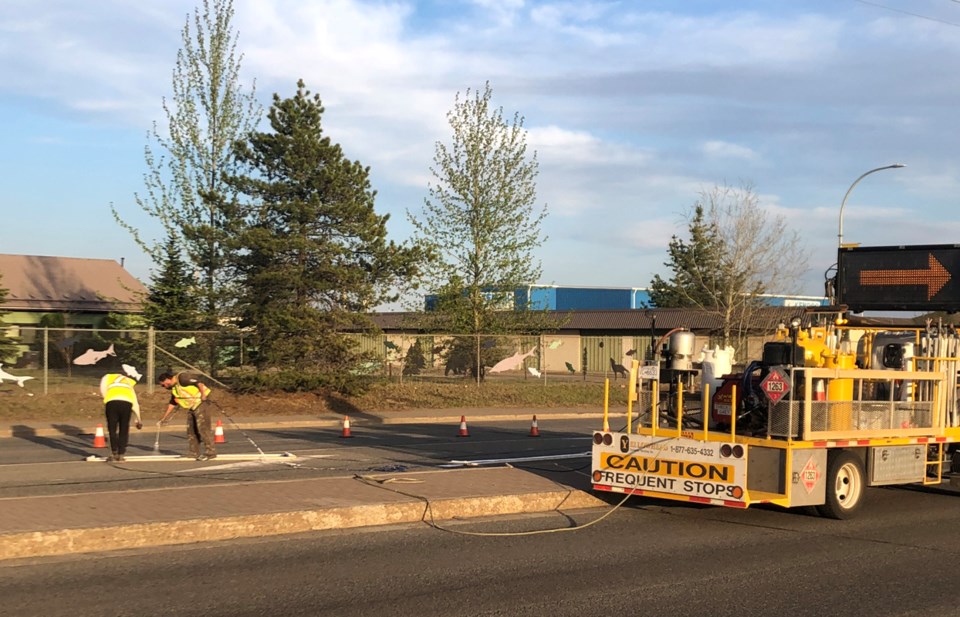Federal environmental regulations regarding volatile organic compounds (VOCs) in paint have reduced the longevity of road markings in Prince George, according to a report going to city council on Monday.
City director of civic operations Blake McIntosh said in 2009 Environment Canada began limiting levels of VOCs which can be contained in road-marking paint. Road paint cannot have more than 450 grams per litre of VOCs and, as of 2012, road paint applied between May 1 and Oct. 15 cannot have more than 150 grams per litre of VOCs.
“Prior to 2009, City staff had experienced better life expectancy of roadway markings with the approved use of paint products containing higher VOC concentrations… Being a winter city, the new paint standard does not withstand snowplow blades and scouring as vehicle tires roll over winter traction material,” McIntosh wrote. “In high traffic areas such as arterial roadways, the roadway paint markings placed at the beginning of the season are no longer visible in the following season.”
City staff are working with their contractors to find longer-lasting alternatives that aren’t cost-prohibitive, he added.
“There are other longer wearing products on the market such as inlaid thermoplastic and methacrylate resin but they are cost prohibitive and would be subject to winter maintenance activities that can be aggressive at times and would likely impact their longevity,” McIntosh wrote. “Thermoplastic long lines are 12 times more expensive than approved paint. Cold plastic methacrylate resin long lines are 16 times more costly than approved paint.”
For 2023, the city’s budget for repainting traffic markings is $471,976, which covers the cost of hiring contractors to paint all municipal traffic and pedestrian road markings, including: approximately 600 pedestrian crossings, 500 stop bars, 610 directional arrows and 460 kilometres of solid, double and dashed white and yellow lines.
“Our current practice is one paint application on all roadways containing traffic markings. Double applications have been trialed in past years with little success,” McIntosh wrote. “The annual line painting contract and budget is also based on a single paint application. Should other more expensive products be employed, an increase in the annual line paint budget would be required.”


.png;w=120;h=80;mode=crop)
